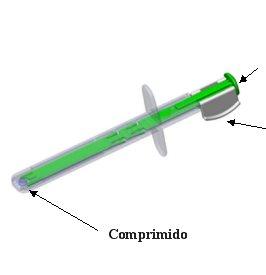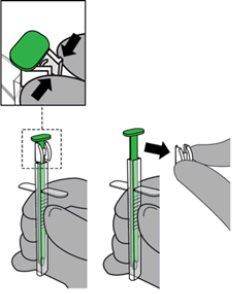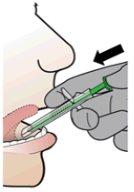

DZUVEO 30 microgramas comprimido sublingual

Pergunte a um médico sobre a prescrição de DZUVEO 30 microgramas comprimido sublingual

Como usar DZUVEO 30 microgramas comprimido sublingual
Introdução
Prospecto: informação para o utilizador
Dzuveo 30microgramas comprimido sublingual
sufentanilo
Leia todo o prospecto detenidamente antes de começar a usar este medicamento, porque contém informações importantes para si.
- Conservar este prospecto, porque pode ter que o reler.
- Se tiver alguma dúvida, consulte o seu médico, farmacêutico ou enfermeiro.
- Se experimentar efeitos adversos, consulte o seu médico, farmacêutico ou enfermeiro, mesmo que se trate de efeitos adversos que não aparecem neste prospecto. Ver secção 4.
Conteúdo do prospecto
- O que é Dzuveo e para que é utilizado
- O que necessita de saber antes de começar a usar Dzuveo
- Como usar Dzuveo
- Possíveis efeitos adversos
- Conservação de Dzuveo
- Conteúdo do envase e informação adicional
1. O que é Dzuveo e para que é utilizado
O princípio ativo de Dzuveo é o sufentanilo, que pertence a um grupo de medicamentos potentes para o alívio da dor denominados opioides.
O sufentanilo é utilizado para tratar a dor repentina moderada a intensa em adultos em um âmbito controlado medicamente, como é um hospital.
2. O que necessita de saber antes de começar a usar Dzuveo
Não use Dzuveo
- Se é alérgico ao sufentanilo ou a algum dos outros componentes deste medicamento (incluídos na secção 6).
- Se tem problemas pulmonares ou respiratórios graves.
Advertências e precauções
Consulte o seu médico ou enfermeiro antes de começar a usar Dzuveo. Informe o seu médico ou enfermeiro antes do tratamento se:
- Apresenta algum distúrbio que afete a sua respiração (como asma, som silbante que se produz ao respirar [sibilância] ou dificuldade para respirar). Como Dzuveo pode afetar a sua respiração, durante o tratamento o seu médico ou enfermeiro comprovarão a sua respiração.
- Apresenta um traumatismo craneoencefálico ou um tumor cerebral.
- Têm problemas de coração e de circulação, especialmente frequência cardíaca lenta, batimentos cardíacos irregulares, volume sanguíneo baixo ou pressão arterial baixa.
- Têm problemas moderados a graves no fígado ou problemas graves nos rins, pois estes órgãos afetam a forma como o seu organismo descompõe e elimina o medicamento; tem movimentos intestinais anormalmente lentos.
- Padecem uma doença da vesícula biliar ou do pâncreas.
- Si ou algum membro da sua família alguma vez abusou ou teve dependência de álcool, de medicamentos com receita ou de drogas ilegais («adicção»).
- É fumador.
- Teve alguma vez problemas relacionados com o estado de ânimo (depressão, ansiedade ou um distúrbio de personalidade) ou foi tratado por um psiquiatra por outras doenças mentais.
Este medicamento contém sufentanilo, que é um opioide. O uso repetido de analgésicos opioides pode fazer com que o fármaco seja menos eficaz (o organismo se acostuma a eles). Também pode produzir dependência e abuso, o que pode dar lugar a uma sobredose potencialmente mortal. É importante que consulte o seu médico se lhe preocupa chegar a desenvolver dependência de Dzuveo.
Consulte o seu médico DURANTE o uso de Dzuveo se:
- Sente dor ou maior sensibilidade à dor (hiperalgesia) que não responde a uma dose mais alta do medicamento tal como foi prescrito pelo médico.
O que necessita de saber antes de começar a usar Dzuveo
Distúrbios respiratórios relacionados com o sono
- Dzuveo pode causar distúrbios respiratórios com o sono, tais como a apneia do sono (pausas respiratórias durante o sono) e hipoxemia relacionada com o sono (nível de oxigénio no sangue baixo). Estes sintomas podem incluir pausas respiratórias durante o sono, despertar noturno devido a dificuldade para respirar, dificuldade para manter o sono ou sonolência excessiva durante o dia. Se si ou outra pessoa observam estes sintomas, contacte o seu médico. O seu médico pode considerar uma redução da dose.
Crianças e adolescentes
Dzuveo não deve ser utilizado em crianças e adolescentes menores de 18 anos.
Outros medicamentos e Dzuveo
Informar o seu médico se está a tomar, tomou recentemente ou possa ter que tomar qualquer outro medicamento. Em particular, informe o seu médico se está a tomar algum dos seguintes:
- Cetoconazol, utilizado para o tratamento de infecções por fungos, este medicamento pode afetar a forma como o seu organismo descompõe o sufentanilo.
- Qualquer medicamento que possa adormecer (ter um efeito sedante), como pastilhas para dormir, medicamentos para tratar a ansiedade (p. ex., benzodiazepinas), tranquilizantes ou outros medicamentos opioides, pois podem aumentar o risco de problemas respiratórios graves, coma e morte.
- Medicamentos para o tratamento da depressão, conhecidos como inibidores da monoaminooxidase (IMAO). Estes medicamentos não devem ser tomados nas 2 semanas anteriores, ou de forma concomitante com a administração de Dzuveo.
- Medicamentos para o tratamento da epilepsia, da dor de origem neurológica ou da ansiedade (gabapentina e pregabalina), pois aumentam o risco de sobredose de opioides e depressão respiratória e podem pôr em perigo a vida do paciente.
- Medicamentos para o tratamento da depressão conhecidos como inibidores seletivos da recaptura de serotonina (ISRS) e inibidores da recaptura de serotonina e noradrenalina (IRSN). Não se recomenda utilizar estes medicamentos de forma concomitante com Dzuveo.
- Outros medicamentos que também se tomam por via sublingual (medicamentos que se colocam debaixo da língua, onde se dissolvem) ou medicamentos que tenham efeito na sua boca (como a nistatina, um líquido ou pastilhas que se mantêm na boca para tratar infecções por fungos), pois não se estudou o efeito sobre Dzuveo.
- Opioides prescritos habitualmente (p. ex., morfina, codeína, fentanilo, hidromorfona, oxicodona).
- Medicamentos utilizados para tratar a hipertensão ou a angina (dor torácica), conhecidos como antagonistas do cálcio ou betabloqueantes, como diltiazem e nifedipino.
Uso de Dzuveo com álcool
Não beba álcool enquanto estiver a usar Dzuveo. Pode aumentar o risco de apresentar problemas respiratórios graves.
Gravidez e lactação
Se está grávida ou em período de lactação, acredita que possa estar grávida ou tem intenção de ficar grávida, consulte o seu médico antes de tomar este medicamento.
Dzuveo não deve ser utilizado durante a gravidez nem em mulheres em idade fértil que não estejam a utilizar métodos anticonceptivos eficazes.
Dzuveo passa para o leite materno e pode ocasionar efeitos adversos no lactente. Não se recomenda a lactação se está a tomar Dzuveo.
Condução e uso de máquinas
Dzuveo afeta a sua capacidade para conduzir ou utilizar máquinas, pois pode causar sonolência, tontura ou alterações visuais. Não deve conduzir nem utilizar máquinas se experimentar algum destes sintomas durante ou após o tratamento com sufentanilo. Só deve conduzir e utilizar máquinas se tiver passado um tempo suficiente após a última administração de Dzuveo.
Dzuveo contém sódio
Este medicamento contém menos de 1 mmol de sódio (23 mg) por comprimido; isto é, é essencialmente “isento de sódio”.
3. Como usar Dzuveo
Este medicamento deve ser administrado por um médico ou um enfermeiro utilizando o dispositivo de administração unidose. Não deve ser administrado por si mesmo este medicamento.
Dzuveo só deve ser utilizado em um âmbito controlado medicamente, como é um hospital. Só podem prescrevê-lo médicos com experiência no uso de analgésicos potentes como o sufentanilo e que conheçam os efeitos que poderia ter em si, particularmente na sua respiração (ver «Advertências e precauções» mais acima).
A dose recomendada é de um comprimido sublingual de 30 microgramas como máximo administrado cada hora. Um profissional de saúde lhe administrará o comprimido sublingual utilizando o aplicador unidose descartável. O aplicador ajudará o profissional de saúde a colocar um comprimido debaixo da sua língua. Os comprimidos dissolvem-se debaixo da língua e não devem ser mastigados nem engolidos porque não serão eficazes para aliviar a dor salvo que possam dissolver-se debaixo da língua. Não deve comer nem beber nada e deve falar o menos possível nos 10 minutos seguintes à administração de cada dose.
Depois de receber uma dose, não lhe será administrada outra dose até pelo menos uma hora após. A dose máxima diária é de 720 microgramas ao dia (24 comprimidos ao dia).
Dzuveo não deve ser utilizado durante mais de 48 horas.
Depois do seu tratamento, o pessoal médico eliminará o aplicador conforme apropriado.
Se usar mais Dzuveo do que deve
Os sintomas de sobredose incluem problemas respiratórios graves, como respiração lenta e superficial, perda do conhecimento, pressão arterial extremamente baixa, colapso e rigidez muscular. Se estes sintomas começarem a aparecer, informe imediatamente um médico ou enfermeiro.
Se tiver alguma outra dúvida sobre o uso deste medicamento, pergunte ao seu médico ou enfermeiro.
4. Possíveis efeitos adversos
Como todos os medicamentos, este medicamento pode produzir efeitos adversos, embora não todas as pessoas os sofram.
Efeitos adversos graves
Os efeitos adversos mais graves são problemas respiratórios graves, como respiração lenta e superficial, que podem fazer com que deixe de respirar.
Se apresentar algum dos efeitos adversos mencionados anteriormente, informe imediatamente o seu médico ou enfermeiro.
Efeitos adversos muito frequentes(podem afetar mais de 1 de cada 10 pessoas):
Náuseas, vómitos ou ganas de vomitar e sensação de calor em geral.
Efeitos adversos frequentes (podem afetar até 1 de cada 10 pessoas)
- Incapacidade ou dificuldade para dormir, ansiedade ou confusão, tontura.
- Dor de cabeça, sonolência, sensação de sono.
- Aumento da frequência cardíaca, pressão arterial alta, pressão arterial baixa.
- Níveis baixos de oxigénio no sangue, sensação de dor na parte inferior da garganta, respiração lenta e superficial.
- Secura da boca, flatulência (gases), estreñimento, dispepsia ou refluxo.
- Reações alérgicas, picazão da pele.
- Contracções e espasmos musculares.
- Incapacidade para urinar.
- Este medicamento também pode causar alterações nos níveis de glóbulos vermelhos, glóbulos brancos, cálcio, albumina, potássio e sódio no sangue, que só podem ser detectadas mediante um exame de sangue. Se lhe vão fazer um exame de sangue, certifique-se de que o seu médico saiba que está a tomar este medicamento.
Efeitos adversos pouco frequentes (podem afetar até 1 de cada 100 pessoas)
- Inflamação dos pulmões, enrubescimento e inflamação dos olhos, inflamação da garganta.
- Acumulações de gordura debaixo da pele.
- Incapacidade para controlar o açúcar no sangue (diabetes), aumento do colesterol.
- Agitação, falta de interesse ou emoção, falta de energia, desorientação, euforia, alucinações ou ver coisas que não existem, nervosismo.
- Problemas de coordenação dos movimentos musculares, contracções musculares, tremores ou agitação excessiva, exageração das respostas refletidas, sensação de queimadura, sensação de desvanecimento, sensação anormal da pele (formigamento), entorpecimento em geral, cansaço, esquecimento, enxaqueca, cefaleia tensional.
- Distúrbios da visão, dor ocular.
- Diminuição da frequência cardíaca, batimentos cardíacos irregulares, angina ou outras molestias torácicas.
- Pressão arterial alta ou pressão arterial baixa ao levantar-se, rubor da pele.
- Respiração lenta ou difícil (incluso ao dormir), hemorragia nasal, soluço.
- Dor torácica e dificuldade para respirar causados por um coágulo de sangue nos pulmões, líquido nos pulmões, sibilância.
- Diarréia, eructos, inflamação do revestimento do estômago ou gastrite, gases, refluxo ácido, ânsias, dor de estômago ou molestias de estômago.
- Aparição de bolhas, suor excessivo, erupção cutânea, secura da pele, entorpecimento da boca ou da face.
- Dor de costas, tórax ou outras partes do corpo, dor nas extremidades.
- Dificuldade para urinar, cheiro intenso da urina, dor ao urinar, insuficiência renal.
- Inchaço, sensações incómodas no peito, arrepios e fraqueza (falta de energia).
Este medicamento também pode causar alterações nos níveis de plaquetas (que ajudam à coagulação do sangue), magnésio, proteínas, açúcar, gorduras, fosfatos e plasma no sangue, que só podem ser identificadas mediante um exame de sangue. Se lhe vão fazer um exame de sangue, certifique-se de que o seu médico saiba que está a tomar este medicamento.
Frequência não conhecida (não pode ser estimada a partir dos dados disponíveis):
- Reações alérgicas graves (choque anafiláctico), convulsões, coma, tamanho pequeno das pupilas, enrubescimento da pele.
- Síndrome de abstinência, que pode incluir sintomas como agitação, ansiedade, dores musculares, insónia, suor e bocejos.
Comunicação de efeitos adversos
Se experimentar qualquer tipo de efeito adverso, consulte o seu médico ou enfermeiro, mesmo que se trate de possíveis efeitos adversos que não aparecem neste prospecto. Também pode comunicá-los directamente através do sistema nacional de notificação incluído no Apêndice V. Mediante a comunicação de efeitos adversos, pode contribuir para fornecer mais informações sobre a segurança deste medicamento.
5. Conservação de Dzuveo
Mantenha este medicamento fora da vista e do alcance das crianças. O seu médico ou enfermeiro se certificarão de que:
- este medicamento não seja utilizado após a data de validade que aparece na etiqueta e no envase após CAD. A data de validade é o último dia do mês que se indica.
- Conservar no embalagem original para protegê-lo da luz e do oxigénio.
- Não utilize este medicamento se observar sinais de deterioração.
Os medicamentos não devem ser jogados fora pelos esgotos nem para o lixo. O seu profissional de saúde se livrará dos envases e dos medicamentos que não necessite de acordo com as normas do hospital. Desta forma, ajudará a proteger o meio ambiente.
6. Conteúdo do envase e informação adicional
Composição de Dzuveo
- O princípio ativo é o sufentanilo. Cada comprimido sublingual contém 30 microgramas de sufentanilo (como citrato).
- Os outros componentes são manitol (E421), fosfato dicálcico, hipromelosa, croscarmelosa sódica, carmim de índigo (E132), ácido esteárico e estearato de magnésio.
Aspecto do produto e conteúdo do envase
Dzuveo é um comprimido sublingual plano de cor azul, com bordos arredondados. Mede 3 mm de diâmetro e é fornecido em um aplicador unidose (etiquetado com [sublingual tablet]). O aplicador, com o comprimido no seu interior, é acondicionado em uma bolsa.
Cada bolsa contém um aplicador e um comprimido de sufentanilo 30 microgramas. Cada envase contém 5 ou 10 bolsas.
Pode ser que apenas alguns tamanhos de envases sejam comercializados.
Titular da autorização de comercialização e Responsável pela fabricação
Laboratoire Aguettant
1, rue Alexander Fleming
69007 Lyon
França.
Data da última revisão deste prospecto:
<------------------------------------------------------------------------------------------------------------------------>
Esta informação está destinada apenas a profissionais de saúde:
Instruções de uso do aplicador unidose (AUD)
Produto de um só uso / Não reutilizar
Não usar se o lacre da bolsa foi quebrado
Não usar se o aplicador unidose (AUD) está danificado
Deve ser indicado ao paciente que não mastigue nem engula o comprimido.
Deve ser indicado ao paciente que não coma nem beba nada e que fale o menos possível nos 10 minutos seguintes à administração do comprimido.
- Quando estiver pronto para administrar o medicamento, abra a bolsa pela linha de corte na parte superior. A bolsa contém um AUD de plástico transparente com um só comprimido de cor azul alojado na ponta e um saco com absorvente de oxigénio. O saco com o absorvente de oxigénio deve ser descartado.
A seguir se mostra o conteúdo da bolsa:

Pulsador
Sistema de bloqueio
- Retire o sistema de bloqueio branco do pulsador verde pressionando sobre ambos os lados ao mesmo tempo para desprender do pulsador. Descarte o sistema de bloqueio.

- Indique ao paciente que, se possível, toque o palato com a língua.
- Apoie suavemente o AUD nos dentes ou nos lábios do paciente.
- Coloque a ponta do AUD debaixo da língua e orientada para o chão da boca do paciente. NOTA: Evite o contacto directo da mucosa com a ponta do AUD.

- Pressione sobre o pulsador verde para liberar o comprimido no espaço sublingual do paciente e confirme a colocação correcta do comprimido.

O aplicador unidose (AMD) deve ser descartado de acordo com as políticas do centro e os requisitos locais.
- País de registo
- Substância ativa
- Requer receita médicaSim
- Fabricante
- Esta informação é apenas para referência e não constitui aconselhamento médico. Consulte sempre um médico antes de tomar qualquer medicamento. A Oladoctor não se responsabiliza por decisões médicas baseadas neste conteúdo.
- Alternativas a DZUVEO 30 microgramas comprimido sublingualForma farmacêutica: INJETÁVEL, 5 microgramas/mlSubstância ativa: sufentanilFabricante: Medochemie LimitedRequer receita médicaForma farmacêutica: INJETÁVEL, 50 microgramas/mlSubstância ativa: sufentanilFabricante: Medochemie LimitedRequer receita médicaForma farmacêutica: INJETÁVEL, 5 microgramas/mLSubstância ativa: sufentanilFabricante: Altan Pharmaceuticals SaRequer receita médica
Alternativas a DZUVEO 30 microgramas comprimido sublingual noutros países
As melhores alternativas com o mesmo princípio ativo e efeito terapêutico.
Alternativa a DZUVEO 30 microgramas comprimido sublingual em Polónia
Alternativa a DZUVEO 30 microgramas comprimido sublingual em Ukraine
Médicos online para DZUVEO 30 microgramas comprimido sublingual
Avaliação de posologia, efeitos secundários, interações, contraindicações e renovação da receita de DZUVEO 30 microgramas comprimido sublingual – sujeita a avaliação médica e regras locais.














